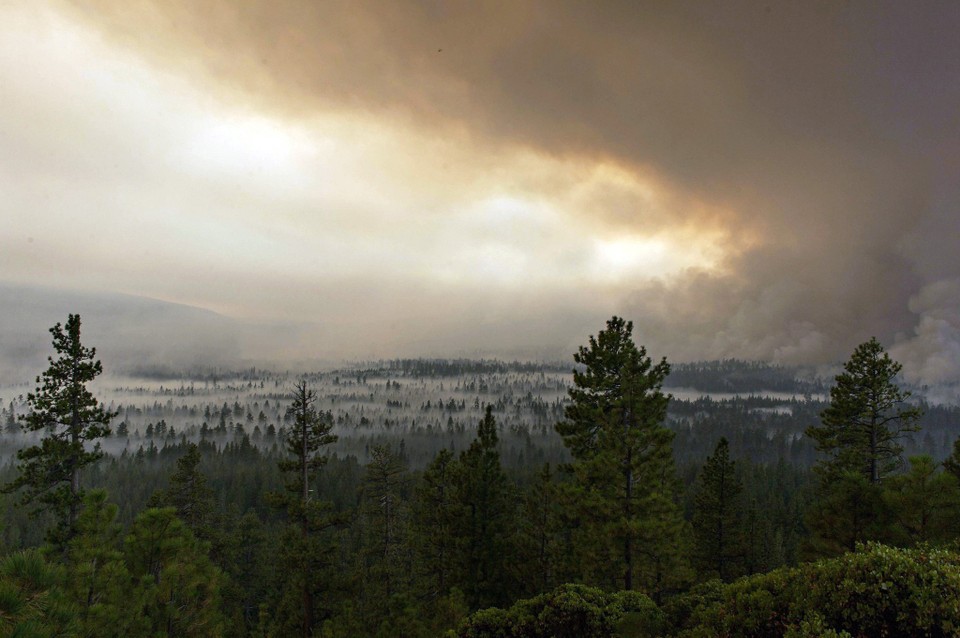
Folks in Sisters, Oregon, are crediting an auspiciously timed collaborative forest-thinning project with saving homes – and some are even saying, their community – this summer when a wildfire marched their way.
And while experts near and far agree the Deschutes Collaborative Forest Project slowed the fire and gave firefighters a chance at containment, they wonder how often and widespread the collaborative project can be replicated in Western forests that historically burned at regular intervals.
In the case of Sisters, the restoration work happened last spring and included thinning trees and brush as well as prescribed burns. The intent was to create a buffer zone around the tourist town, and it worked precisely as intended.
The community’s success is being touted after this summer’s widespread wildfires in the northern Rockies and Pacific Northwest focused attention on the condition of Western forests after more than a century of aggressive fire suppression by the U.S. government.
These forests – originally ponderosa and lodgepole pine – typically burned frequently and at low intensity, with the fire clearing underbrush and smaller trees, opening up space for the larger trees to grow.
That changed after the firestorms of 1910 in western Montana and northern Idaho burned entire towns, killed townspeople and firefighters, and shook the fledgling U.S. Forest Service to its core. Not long thereafter, the agency adopted a series of policies and programs designed to extinguish all wildfires, and quickly.
Now, of course, the West is paying the price as the now-overgrown pine and fir forests feed previously unimaginable mega-fires. (The same scenario does not hold true with the current northern California fires burning in chaparral, which grows in thick clusters, following years of record-breaking drought and heat.)
But the Sisters project has left land managers, the timber industry, environmentalists and firefighters wondering how or if such thinning work can be replicated across such an enormous landscape.
The Associated Press laid out the issues in a just-published story by Andrew Selsky.
Among the questions: Can all communities come together and find common ground as did the environmentalists, loggers, forest managers, business leaders and homeowners in Sisters? If so, can they find the money needed to finance the work in an era of dwindling Forest Service budgets?
Since Congress created the Collaborative Forest Landscape Restoration program in 2009, just 23 projects have been approved. To restore the West’s forests would require thousands of even larger projects.
And what happens in areas where lumber mills and loggers have virtually disappeared? Who will do the work, and where will the merchantable timber be processed?
And remember, the underbrush would return, so every project would have to be revisited with additional thinning and burning at regular intervals.
Finally, what about the smoke from the controlled burns? States throughout the West have placed strict limitations on prescribed fire ignitions because of air-quality concerns. But wildfires create even more and more health-hazardous smoke, the experts contend. Can states and municipalities be convinced to allow vastly more controlled fires in hopes of warding off dense summertime blankets?
Read the full Associated Press account here, then join the conversation at Treesource and in your local community.

Leave a Reply